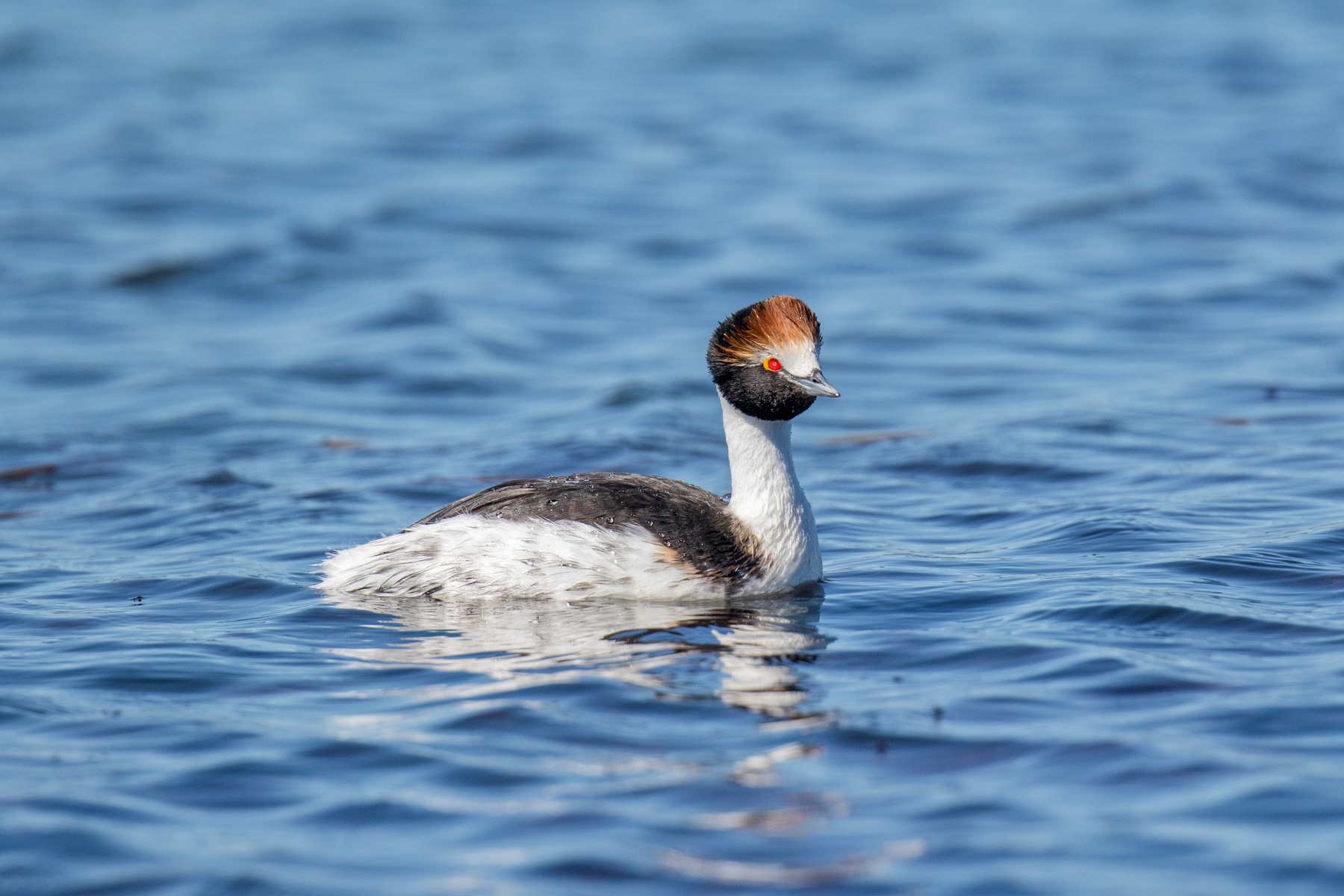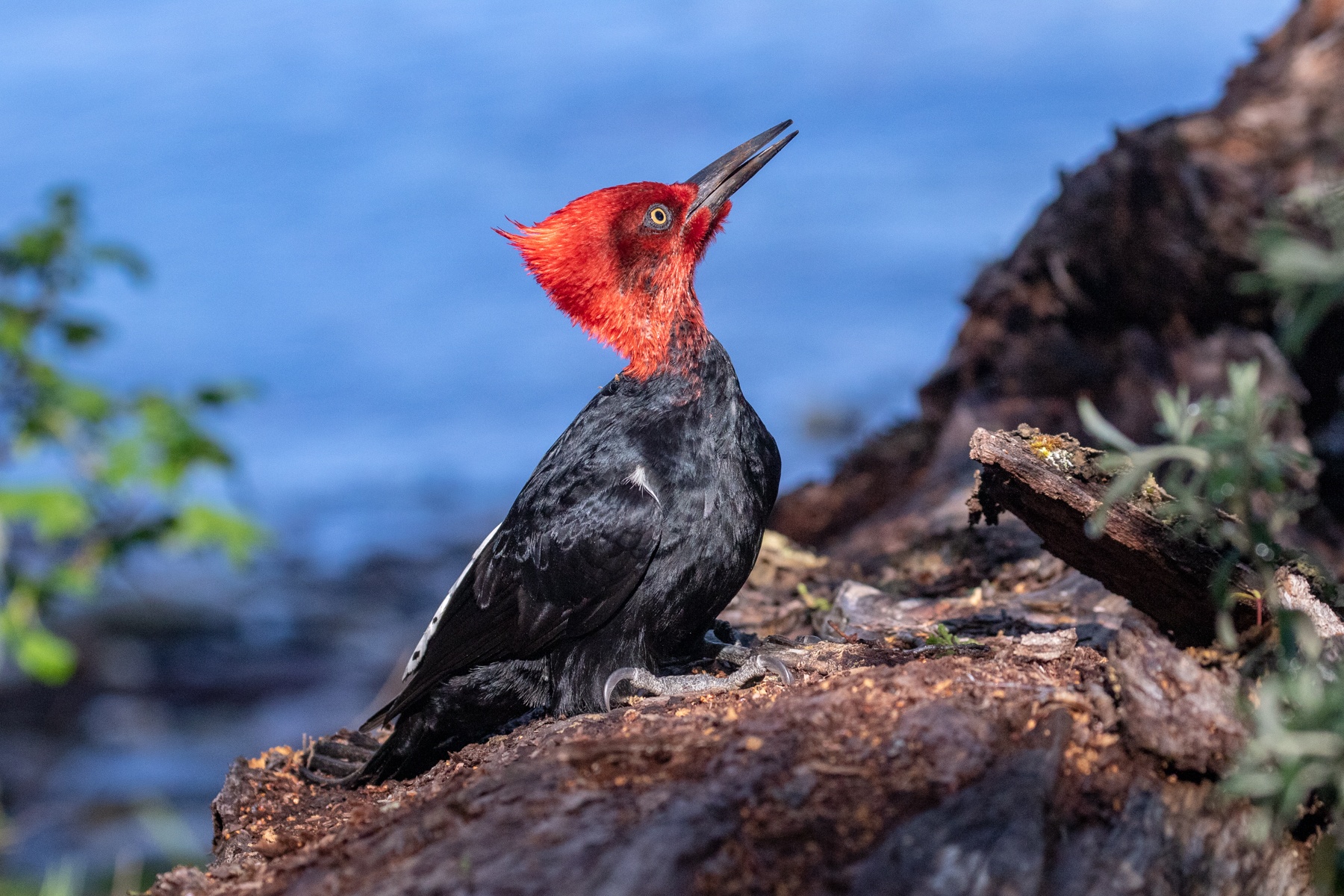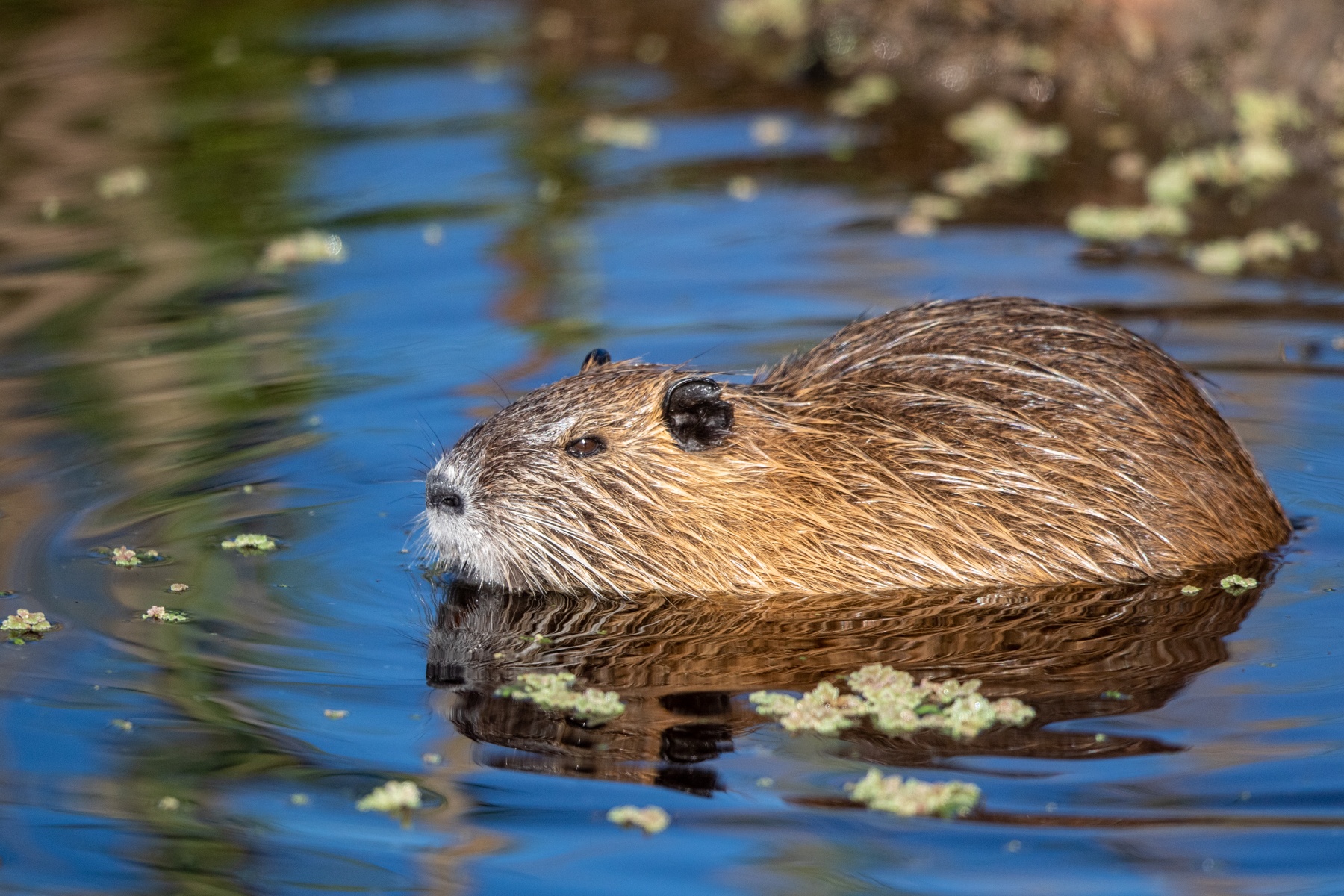SOUTHERN & CENTRAL ARGENTINA BIRDING TOUR: DETAILED ITINERARY
Southern & Central Argentina: Day 1 Our tour begins this morning at Córdoba airport in Argentina’s third-largest city. From the airport, we will head for the small village of Icho Cruz for an overnight stay. This afternoon we will have our first visit to the Pampa de Achala for some very special birds.
Southern & Central Argentina: Day 2 Not far away from Icho Cruz is the Pampa de Achala in the Sierra de los Comechingones, a mountain range that is much older than the Andes. These rugged sierras stretch across the horizon, one rocky ridge after another. Here rushing streams tumble through Polylepis-filled gullies down to the pampa grasslands below. These hills are not only very imposing but offer marvellous views of the vast plains stretching away into the distance.
The main attractions here are three ovenbirds with among the most restricted distributions of all South American birds, centred on these isolated mountains in central Argentina. We should be able to locate all three. Olrog’s Cinclodes is frequently to be found hugging the banks of the rushing streams in dipper-like fashion, while Córdoba Cinclodes can be found leaping about on the rocky outcrops with fluttering wings. Grassy slopes are the haunt of the Córdoba Canastero (sometimes split from Puna Canastero).
In addition to these exciting endemics, we should also see a number of restricted-range specialities including Brushland Tinamou, Rufous-banded Miner, Chaco Earthcreeper, Stripe-crowned Spinetail, Lark-like Brushrunner, the noisy Brown Cacholote (often on its huge stick nest) and Chaco Sparrow. With a little luck, we will also encounter the impressive Black-legged Seriema and the eye-catching Red-tailed Comet.
The beautiful, restricted-range Olive-crowned Crescentchest (nowadays placed in its own family rather than with the tapaculos), is not uncommon in these parts and its trilling song should give away its presence.
More widespread birds include Black Vulture, White-winged Cinclodes, Sooty-fronted Spinetail, Chiguanco Thrush, Tawny-headed Swallow and Plumbeous Sierra Finch. Scarcer denizens of the area include White-collared Swift, Rufous-naped Ground Tyrant and Ash-breasted Sierra Finch.
After spending much of the day at the Pampa de Achala and in more wooded habitats at lower altitudes in the surrounding region, we will transfer to the mountain village of Capilla del Monte for a two nights stay.
Southern & Central Argentina: Day 3 Today we shall head north to Salinas Grandes, a large area of inland salt marsh. This is the type locality for the comparatively recently-described Salinas Monjita and we have a very good chance of finding this rare endemic flycatcher at a site where it is regularly recorded.
Other birds we are likely to see today in the dry country north of Córdoba include a series of restricted-range or even near-endemic specialities including Spot-winged Falconet, the very impressive Scimitar-billed Woodcreeper, Crested Hornero, Cinereous Tyrant, the near-endemic Chaco Sparrow, Many-colored Chaco Finch, Black-crested Finch and Black-capped Warbling Finch. We have seen Black-legged Seriema here on occasion. More widespread species include Blue-tufted Starthroat, Narrow-billed Woodcreeper, Crowned Slaty Flycatcher and Red Pileated (or Red-crested) Finch.
During our visit to the Capilla del Monte region, we will also visit an area of woodland where we have a fair chance of finding the rare near-endemic Black-bodied Woodpecker.
Southern & Central Argentina: Day 4 After some more birding at Capilla del Monte (that woodpecker can be difficult to find), we will travel to Laguna Mar Chiquita for an overnight stay at Miramar.
The huge lake known as Laguna Mar Chiquita is a reliable locality for the poorly-known Dinelli’s Doradito, a species that breeds only in north-central Argentina and which disperses north in the Austral winter as far as southernmost Bolivia and Paraguay.
Mar Chiquita is a vast and important wetland area, extending to approximately 9500 square kilometres! The lake is a hugely important breeding area for Chilean Flamingoes, with a population estimated at 100,000 individuals. Better still, there are usually numbers of both Andean and James’s (or Puna) Flamingoes present. The latter are more numerous during the Austral winter, but there should still be a fair number at the time of our visit. The lake is also an important wintering and transit area for migrant shorebirds, hosting large numbers of American Golden Plovers, Lesser Yellowlegs, White-rumped Sandpipers and Wilson’s Phalaropes in particular. We also have chances to find the interesting South American Painted-snipe and the shy Dot-winged Crake.
Other new birds in the lake surroundings should include White-fronted Woodpecker and Red-crested Cardinal.
Southern & Central Argentina: Day 5 This morning we will make an early start for Córdoba airport and take a flight to Buenos Aires. From there we will head off across the pampas towards the small seaside resort of San Clemente del Tuyu for a two nights stay.
Along the way, we will investigate just a few of the myriad of lakes and marshes scattered throughout the grasslands. This is easy and wonderful birding, and the San Clemente region is likely to produce such spectacular birds as Greater Rhea, Maguari Stork, Roseate Spoonbill, Southern Screamer and Black-necked Swan.
In addition, either today or while based at San Clemente, we will encounter many other species, most likely including Spotted Nothura (a small partridge-like tinamou of the grasslands), White-tufted Grebe, Neotropic Cormorant, Black-crowned Night Heron, Cocoi, Whistling and Striated Herons, Western Cattle, Great and Snowy Egrets, Bare-faced and White-faced Ibises, Fulvous and White-faced Whistling Ducks, Coscoroba Swan, Yellow-billed, Silver and Cinnamon Teals, Yellow-billed Pintail, Chiloe Wigeon, Red Shoveler, Rosy-billed Pochard, Lake Duck, the strange, parasitic Black-headed Duck (which often lays its eggs in the nests of coots!), Snail Kite, the handsome Long-winged Harrier, Roadside Hawk, Southern Crested and Chimango Caracaras, American Kestrel, Giant Wood Rail, Plumbeous Rail, Spot-flanked Gallinule, White-winged, Red-gartered and Red-fronted Coots, Limpkin, White-backed Stilt, Southern Lapwing, Wattled Jacana, Lesser Yellowlegs, Buff-breasted Sandpiper, Picazuro and Spot-winged Pigeons, Eared Dove, Picui Ground-Dove, Monk Parakeet, the incomparable Guira Cuckoo, Burrowing Owl, Glittering-bellied Emerald, Gilded Sapphire, Ringed Kingfisher and Campo Flicker.
Passerines include the restricted-range Hudson’s Canastero as well as Sulphur-bearded Spinetail, Rufous Hornero, Freckle-breasted Thornbird, Wren-like Rushbird, Small-billed Elaenia, White-crested Tyrannulet, Warbling Doradito, the beautiful and aptly-named Many-coloured Rush-Tyrant, Bran-coloured, Scarlet and Fork-tailed Flycatchers, the fantastic Spectacled Tyrant, Yellow-browed and Cattle Tyrants, Tropical Kingbird, Great Kiskadee, Grey-breasted and Brown-chested Martins, White-rumped Swallow, Chalk-browed Mockingbird, Rufous-bellied Thrush, House Wren, Masked Gnatcatcher, Hooded Siskin, Southern Yellowthroat, Shiny Cowbird, Baywing (or Bay-winged Cowbird), Brown-and-yellow Marshbird, White-browed, Scarlet-headed and Yellow-winged Blackbirds, Rufous-collared Sparrow, Black-and-rufous Warbling Finch, Grassland Yellow Finch and Pampa Finch.
There is a fairly good chance of seeing the much sought-after South American Painted Snipe in this area and If we are lucky we will find one or two of the more elusive denizens of the area, which include Stripe-backed Bittern and Dot-winged Crake.
Coypus, here in their native habitat, graze peacefully amongst the many wildfowl.
Thickets and relict patches of native tala forest hold scrub and woodland species such as Dark-billed Cuckoo, Checkered Woodpecker, Spix’s Spinetail, Creamy-bellied Thrush, Red-crested Cardinal and Variable Oriole.
Southern & Central Argentina: Day 6 We will focus some of our attention today on Punta Rasa, a low peninsula stretching north from San Clemente with a wide ocean beach to the east and extensive salt marshes, tidal mudflats and sandy dunes to the west. Situated in the outer reaches of the Rio de la Plata estuary, this is a very important staging and wintering area for a wide variety of ducks, waders, gulls and terns, and also attracts a good number of passerine migrants. Punta Rasa has become a popular birding locality for birdwatchers from Buenos Aires.
Here we will be looking in particular for such species as Great Grebe, Chilean Flamingo, American Golden Plover, Hudsonian Godwit, White-rumped, Pectoral and Baird’s Sandpipers, the endangered, near-endemic Olrog’s Gull, Kelp and Brown-hooded Gulls, Royal and Snowy-crowned Terns, Cabot’s Tern (sometimes lumped in Sandwich), Black Skimmer, White-throated Hummingbird, Tufted Tit-Spinetail, the range-restricted Bay-capped Wren-Spinetail, Firewood-gatherer (named after its enormous stick nest), Sedge Wren, Blue-and-white Swallow, Hellmayr’s and Correndera Pipits, and Long-tailed Reed and Saffron Finches.
The rest of our time will be spent in areas of pampas with marshes, pools and lagoons, looking for many of the species mentioned for yesterday.
Southern & Central Argentina: Day 7 After some final birding in the San Clemente area we will drive southwest to Bahia Blanca for an overnight stay.
Along the way, we will be on the lookout for such species as Red-winged Tinamou, Turkey Vulture, White-tailed Kite, Gray-hooded (or Grey-headed) Gull and Short-eared Owl.
Southern & Central Argentina: Day 8 We will devote the first part of the day to looking for one of the rarest and most localized endemic species in Argentina, the Pampas Meadowlark, which is threatened with extinction due to the conversion of natural pampas into pastures.
Other birds likely in the same area include the restricted-range Pampas Pipit as well as Red-winged Tinamou, Spotted Nothura, Grassland Sparrow, Grassland Yellow Finch and Long-tailed Meadowlark, and quite likely the dainty Bearded Tachuri. We will also have our first chance for the elusive Darwin’s Nothura.
We will also turn our attention to areas of scrubby woodland. Here our major targets will be two Argentine breeding endemics; Hudson’s Black Tyrant and Cinnamon Warbling Finch. Other specialities include the recently described, restricted-range Straneck’s (or Monte) Tyrannulet and the delightful but patchily-distributed Greater Wagtail-Tyrant.
Other species we should encounter in the Bahia Blanca region include Southern Lapwing, Picazuro and Spot-winged Pigeons, Eared Dove, Picui Ground Dove, the incomparable Guira Cuckoo, Burrowing Owl, Campo Flicker, Crested and Chimango Caracaras, American Kestrel, Monk Parakeet, Rufous Hornero, Tufted Tit-Spinetail, Pale-breasted Spinetail, Firewood-gatherer, Tufted Tit-Tyrant, White-crested and White-bellied Tyrannulets, Southern Scrub and Scarlet Flycatchers, the fantastic Spectacled Tyrant, Great Kiskadee, White-tipped Plantcutter, White-rumped Swallow, House Wren, White-banded Mockingbird, Shiny Cowbird, Rufous-collared Sparrow, Blue-and-yellow Tanager and Ringed Warbling Finch.
Afterwards, we will head southwards to the coastal town of San Antonio Oeste for an overnight stay. We will have time for further birding in the Bahia Blanca region if we need to do so.
Along the way, we will stop to look for the increasingly rare, near-endemic Yellow Cardinal (nowadays there is only a slim chance in this area) as well as Pale-breasted Spinetail and the showy White Monjita.
Southern & Central Argentina: Day 9 San Antonio Oeste is situated in northern Patagonia, so here we have left the vast pampas of Argentina behind and entered a cooler, windier environment.
This morning we will visit an area that is home to another localized and uncommon Argentine breeding endemic; Carbonated Sierra Finch.
Other birds we may well see around San Antonio Oeste include two further endemics, Sandy Gallito and White-throated Cacholote (although both are uncommon in southern Argentina), as well as Short-billed Canastero, White-tipped Plantcutter, White-winged Black Tyrant, the uncommon Black-crowned Monjita, Southern Martin and Golden-billed Saltator.
Burrowing Parrots nest in the low coastal cliffs close to our hotel and in this locality, this restricted-range speciality allows a very close approach.
Later we will head south to Trelew in Chubut province for an overnight stay.
As we cross the vast semi-desert plains we will begin to appreciate the immensity of the flat, desolate, treeless, wind-swept ‘wasteland’ that is northern Patagonia (a land named, it seems, from the Spanish word patacones, meaning ‘big feet’, used by the invaders as their name for the local Amerindians).
We will stop along the way near Puerto Madryn. The bays in this area, situated at the base of the Valdés Peninsula, are important mating and calving areas for the Southern Right Whale and we may see one or more of these magnificent creatures offshore, although we will be in the area right at the end of the whale season.
Southern & Central Argentina: Day 10 The wild steppe landscape of the Trelew region holds some great birds, including Lesser Rhea, Elegant Crested Tinamou, Common Miner, the endemic Patagonian Canastero, Lesser Shrike Tyrant, the endemic Rusty-backed Monjita and Short-billed Pipit, as well as a variety of terrestrial mammals such as Guanaco (a smaller cousin of the Llama) and Patagonian Mara (an enormous rodent that sits on its haunches, rather like a kangaroo).
A highlight of our time in Patagonia will be a visit to Punta Dos Bahias, one of the largest seabird colonies on the Patagonian coast. The sand dunes, rocky shores and sandy beaches support a huge number of breeding Magellanic Penguins along with good numbers of Rock and Imperial Shags, Chilean Skuas, Dolphin and Kelp Gulls, and South American Terns. Watching the penguin colony at close range is quite an experience as thousand upon thousand of adults guard their burrow entrances, feed their young chicks, call noisily or march to and from the beach and the adjacent ocean (where thousand upon thousand more are loafing or feeding). Southern Giant Petrels are also attracted by the prospect of some scrumptious carrion and they are sometimes joined by one or two Northern Giant Petrels. Snowy Sheathbills are almost always present. This is also one of the best localities for observing the endemic Chubut Steamer-Duck, first described in 1974 and only known from coastal Chubut province. Even Macaroni Penguin has turned up here!
Other birds which we are likely to find in the Trelew region, or further to the south in Patagonia, include Silvery Grebe, Crested Duck, the smart Cinereous Harrier, Variable Hawk, Blackish Oystercatcher, Brown-hooded Gull, Scaly-throated Earthcreeper, the near-endemic Band-tailed Earthcreeper, Plain-mantled Tit-Spinetail, Sharp-billed Canastero, Grey-bellied Shrike-Tyrant, Yellow-billed Tit-Tyrant, Austral Negrito, Patagonian and Chalk-browed Mockingbirds, Mourning Sierra Finch, Common Diuca Finch and Patagonian Yellow Finch. With a bit of luck, we will also encounter Darwin’s Nothura.
Afterwards, we will continue to nearby Camarones for an overnight stay.
Southern & Central Argentina: Day 11 Today is a travel day as we head southwards through a vast expanse of Patagonian steppe to Puerto San Julian for an overnight stay. We have our first chance for the big but uncommon Patagonian Tinamou along the way and we will also stop at some cliffs for close-up views of breeding Imperial and Rock Shags and stunning Red-legged Cormorants.
Southern & Central Argentina: Day 12 The region around Puerto San Julian offers us our best chance for Patagonian Tinamou and we will be concentrating on this species early this morning. Afterwards, we will travel to a typical old Patagonian estancia at La Angostura in the Gobernador Gregores region for a three nights stay.
This estancia is where the Austral Rail was rediscovered. It was a species lost to science and considered extinct for 50 years until it was rediscovered here in the late 1990s. With patience and a little luck (this is a species much more easily heard than seen), we will observe this mega-rarity for ourselves.
Staying at La Angostura is a delightful experience, with hospitable hosts, good food and the opportunity to see a working estancia in action. The marsh and nearby lake here are full of waterbirds, making for a most enjoyable experience. New birds here may well include Black-faced Ibis, Andean Duck and Wren-like Rushbird.
Southern & Central Argentina: Days 13-14 During our stay we will visit some remote upland lakes where we will be searching for the striking Hooded Grebe.
Nowadays a veritable ‘grailbird’ of South American birding, the Hooded Grebe was first described as recently as 1974! These enigmatic birds have a tendency to change their breeding sites whenever conditions become unfavourable, making them hard to predict and locate, and tragically the population is now showing signs of collapse owing to a combination of reduced rainfall and increased predation, so the species is now ranked as Critically Endangered. We have lengthened our stay in this area to allow up to two full days for looking for Hooded Grebes rather than one, as they are getting harder and harder to find. Hopefully, we will be rewarded with views of some of these lovely birds amidst the blue waters, a truly memorable experience!
Other species that we will be wanting to find in this wild and beautiful region are the handsome Tawny-throated Dotterel and the smart Chocolate-vented Tyrant. We will also encounter the handsome Upland Goose, Black-chested Buzzard-Eagle, Least Seedsnipe, Buff-winged Cinclodes, Dark-faced Ground Tyrant and Grey-hooded Sierra Finch.
Southern & Central Argentina: Day 15 This morning we will head southwestwards to El Chaltén for an overnight stay.
El Chaltén is spectacularly positioned close to one of the highest peaks in the Patagonian Andes, Mount Fitzroy (3405m or 11,171ft) and lies not far from the border between Argentina and Chile. Assuming the weather is good or at least reasonable during our stay, we will enjoy some of the most spectacular scenery in the whole of Patagonia, including the awesome snowfields and glaciers that cover much of Mount Fitzroy. (The mountain is named in honour of Robert Fitzroy, captain of the famous Beagle, who charted large parts of the Patagonian coast.)
During our time around El Chaltén, we will be concentrating our attention on finding species such as the smart Bronze-winged (or Spectacled) Duck, Striped Woodpecker, Chilean Flicker, Austral Parakeet, the strange Rufous-tailed Plantcutter, the unusual Thorn-tailed Rayadito, Chilean Elaenia, Fire-eyed Diucon, Chilean Swallow, Austral Thrush and Austral Blackbird. This is a good area for seeing both the large Rufous-legged Owl and the diminutive Austral Pygmy Owl. We will also have our first chances for the impressive Magellanic Woodpecker (the largest of the South American woodpeckers) and White-throated Treerunner. There is even a chance of finding the noisy Black-throated Huet-Huet, a large tapaculo restricted to southern Chile and adjacent Argentina. Andean Condors are still common in this superb area and we should see them frequently as they soar over the wild landscape.
Southern & Central Argentina: Day 16 After spending the morning around El Chaltén we will head further south to El Calafate, a small town situated on the shores of Lago Argentino, where we will spend two nights.
Southern & Central Argentina: Day 17 Our principal target at El Calafate itself is the enigmatic Magellanic Plover (which is now placed in its own monotypic family), but the wetlands here also hold a superb concentration of other waterbirds, including large numbers of Chilean Flamingoes.
The southern Andes are renowned for their exceptional scenic grandeur, for this is a land of jagged peaks and permanent snows, mighty glaciers and great lakes, and extensive southern beech forests. Some of the region’s finest scenery lies in Glaciers National Park, only a short distance to the west of El Calafate. We will spend some highly rewarding time in this wonderful park, gazing in awe at the magnificent scenery, watching in amazement as huge chunks of ice break off from a glacier and crash into the lake, and birding the humid forests and lakeshores.
The park is a very good spot for both Magellanic Woodpecker and Magellanic Tapaculo, as well as a number of other birds already mentioned for El Chaltén.
Southern & Central Argentina: Day 18 After some early morning birding around El Calafate, our tour ends at El Calafate airport later this morning.














































